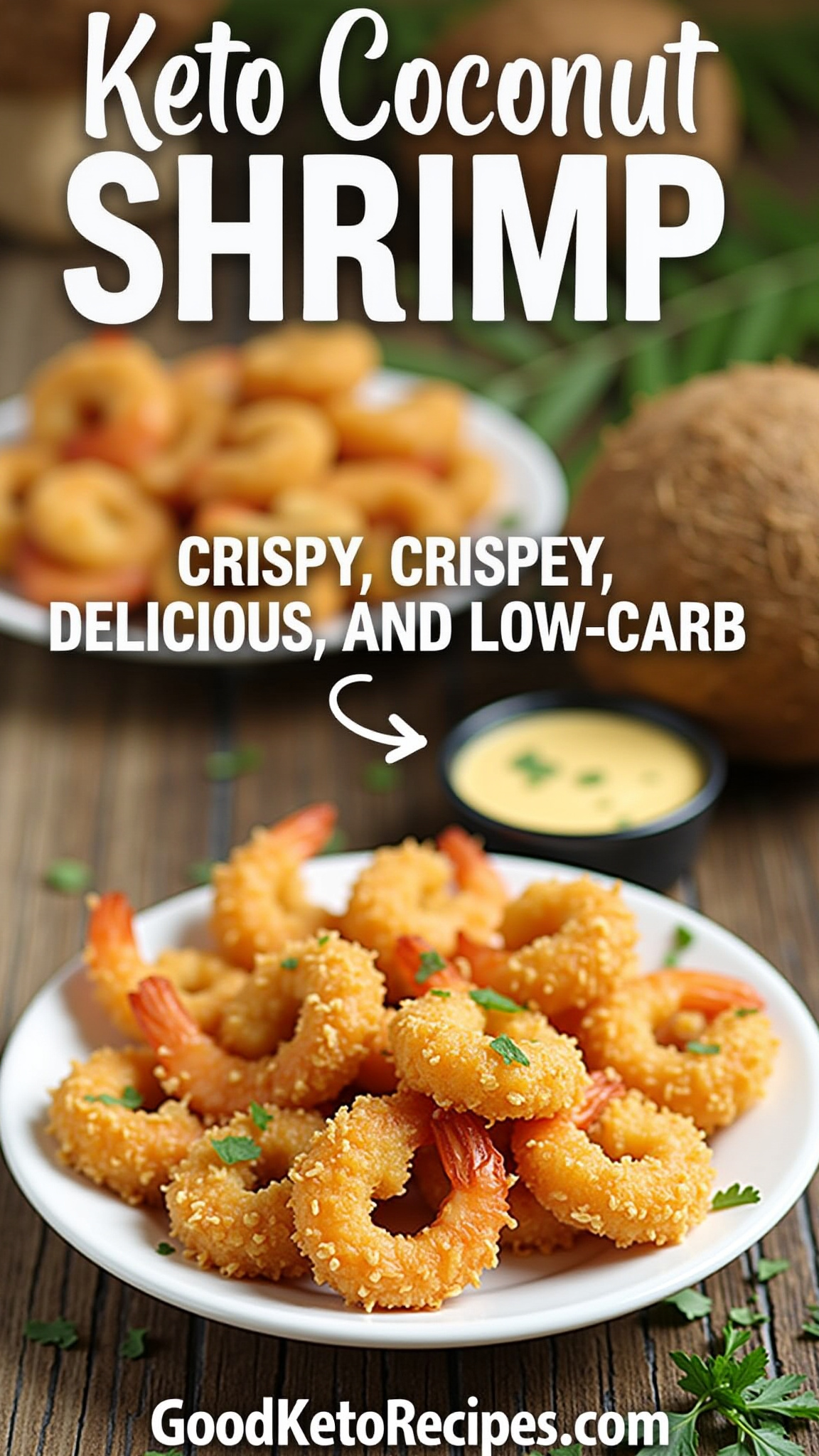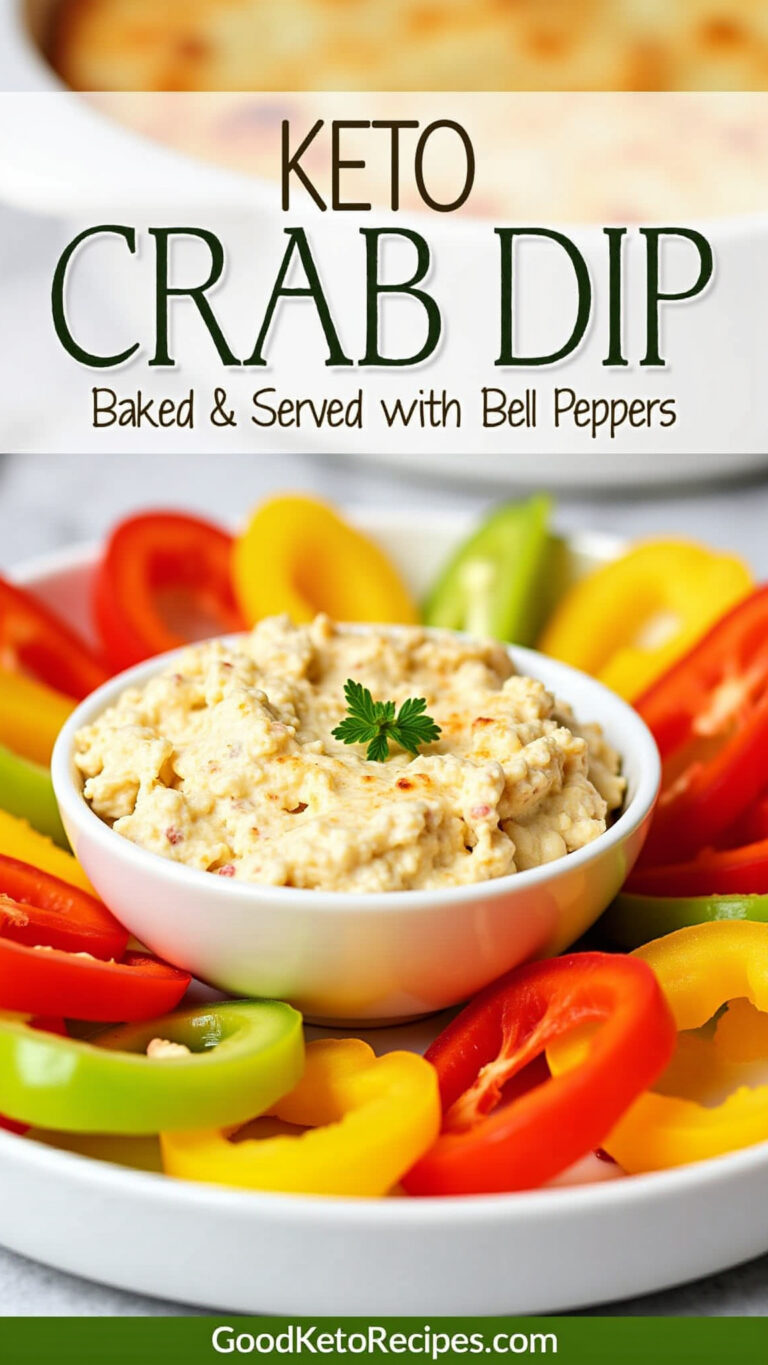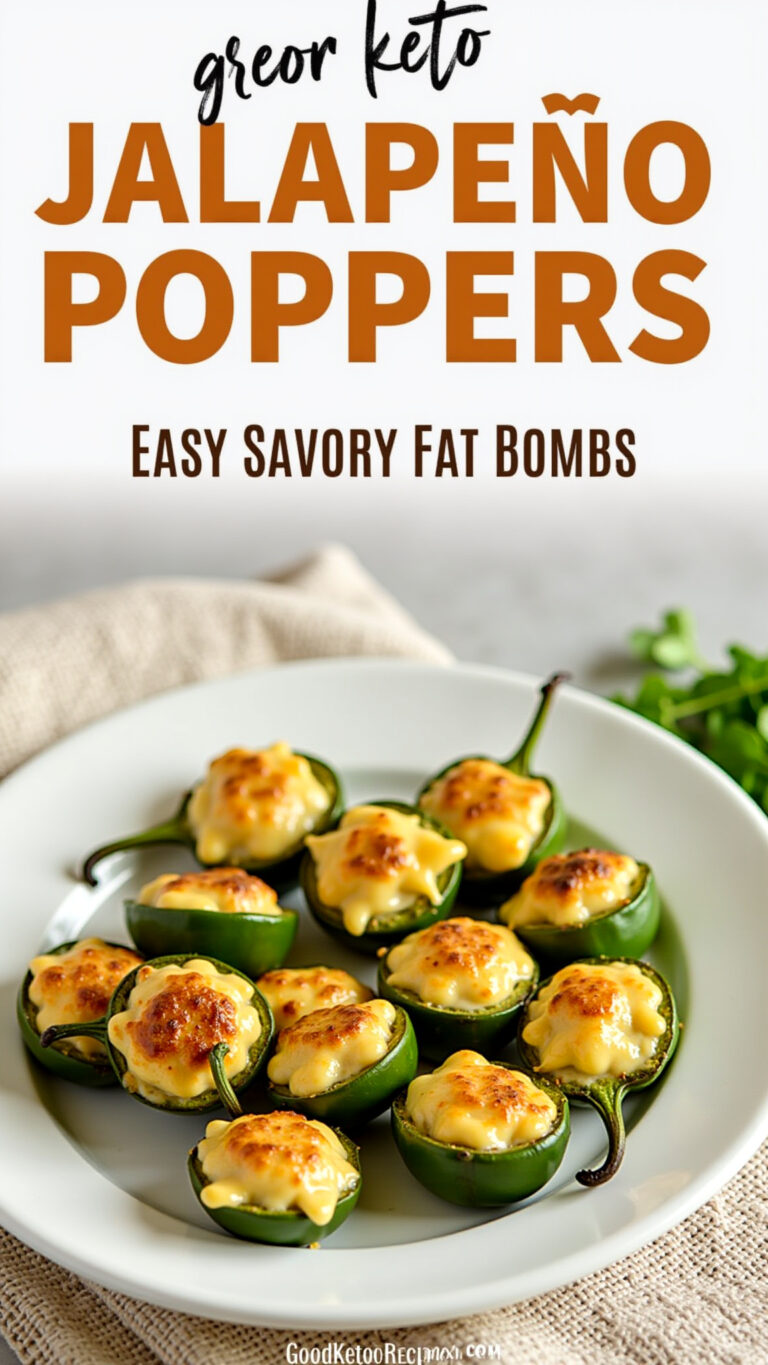Keto Coconut Shrimp: Crispy, Delicious, and Low-Carb!

Craving crispy, sweet, and savory coconut shrimp but trying to stick to a keto diet? Look no further! This recipe delivers all the satisfying crunch and flavor of traditional coconut shrimp without the carbs. Whether you prefer pan-frying or air frying, this keto coconut shrimp recipe is incredibly easy, quick, and guaranteed to become a new favorite. This article will guide you through the entire process, offering tips, tricks, and variations to create the perfect keto coconut shrimp every time.
Why Keto Coconut Shrimp?
Traditional coconut shrimp is typically coated in breadcrumbs and sugar-laden coconut flakes, making it a definite no-go for those following a ketogenic diet. This keto-friendly version cleverly swaps out these ingredients with low-carb alternatives like almond flour, unsweetened shredded coconut, and erythritol (or your preferred keto-friendly sweetener). The result is a dish that’s just as delicious, satisfying, and crispy as the original, but without the guilt.
Ingredients You’ll Need
Here’s a breakdown of the ingredients for making keto coconut shrimp:
- Shrimp: 1 pound large or jumbo shrimp, peeled and deveined (tail on or off, your preference)
- Almond Flour: 1/2 cup, used as the primary breading agent.
- Unsweetened Shredded Coconut: 1 cup, providing the signature coconut flavor and texture.
- Erythritol (or other keto sweetener): 2 tablespoons, adds a touch of sweetness to balance the flavors.
- Eggs: 2 large, beaten, used to help the coating adhere to the shrimp.
- Coconut Oil (or avocado oil): For pan-frying or spraying the air fryer basket.
- Salt and Pepper: To taste, for seasoning the shrimp and the coating.
- Optional Spices: 1/2 teaspoon garlic powder, 1/4 teaspoon cayenne pepper (for a little kick).
Pan-Fried Keto Coconut Shrimp: Step-by-Step Instructions
Pan-frying delivers a beautifully golden-brown and crispy exterior. Here’s how to do it:
Step 1: Prepare the Shrimp
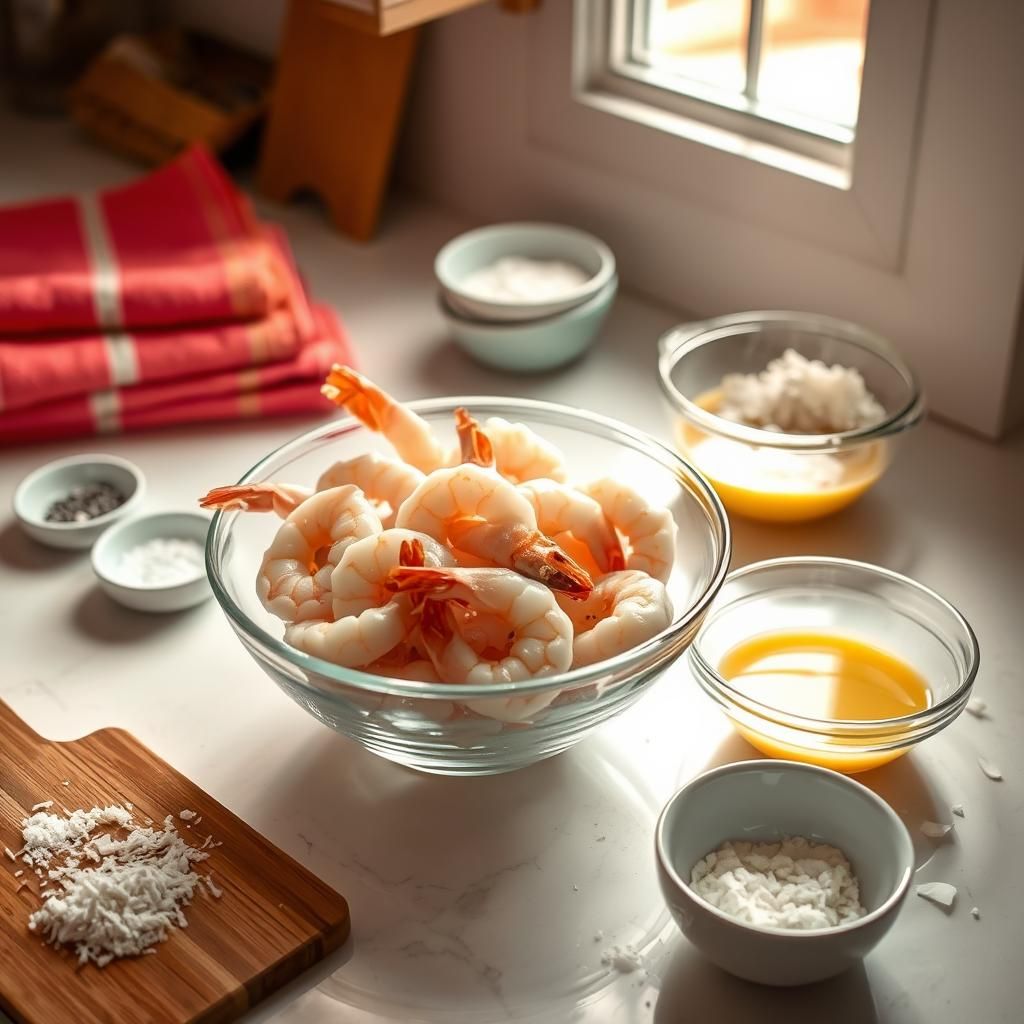
- Pat the shrimp dry with paper towels. This is crucial for getting a crispy coating. Excess moisture will prevent the coating from sticking properly and result in soggy shrimp.
- Season the shrimp with salt and pepper. You can also add a pinch of garlic powder or cayenne pepper for extra flavor.
Step 2: Prepare the Breading Stations

Set up three shallow dishes:
- Dish 1: Almond flour, seasoned with salt and pepper (and optional spices).
- Dish 2: Beaten eggs.
- Dish 3: Unsweetened shredded coconut mixed with erythritol.
Step 3: Breading the Shrimp
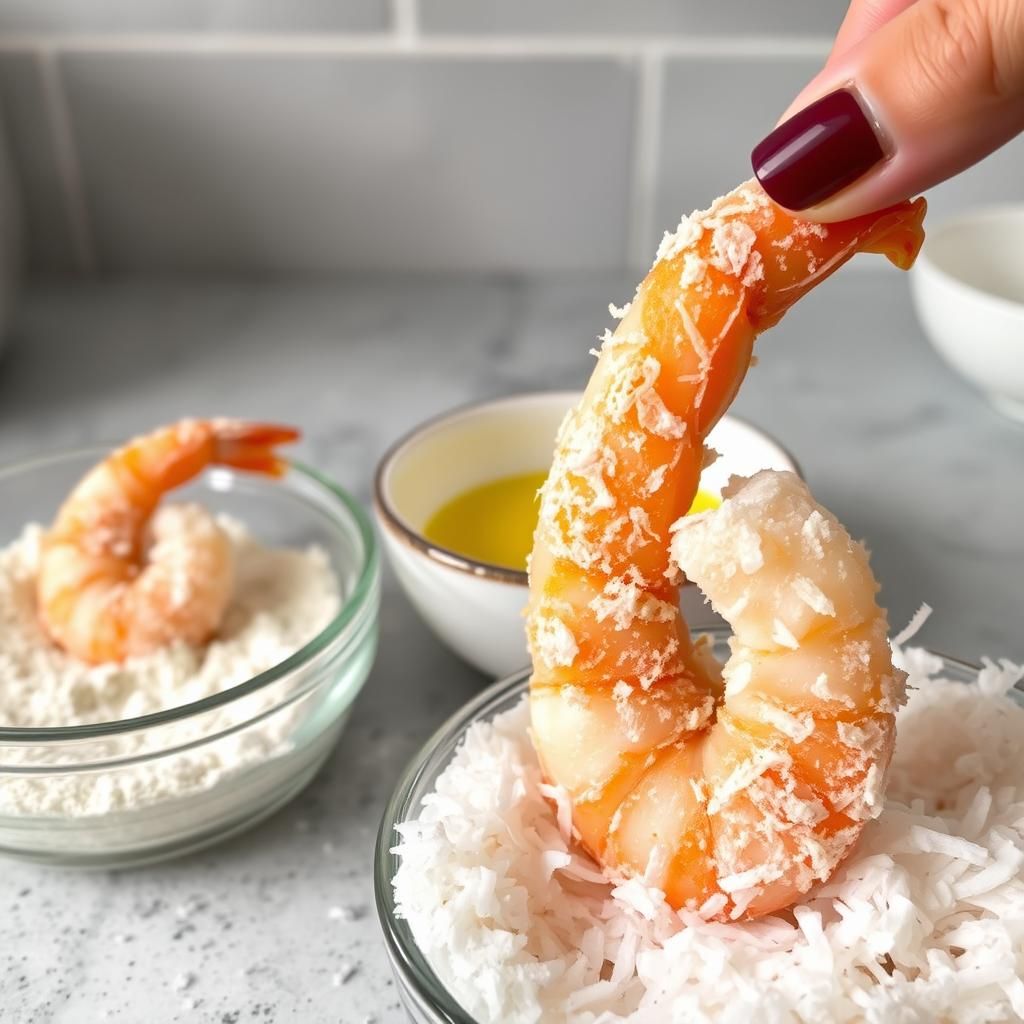
- Dredge each shrimp in the almond flour, ensuring it’s fully coated. Shake off any excess.
- Dip the shrimp into the beaten eggs, allowing any excess to drip off.
- Finally, coat the shrimp in the coconut mixture, pressing gently to ensure the coconut adheres well.
Step 4: Pan-Frying the Shrimp
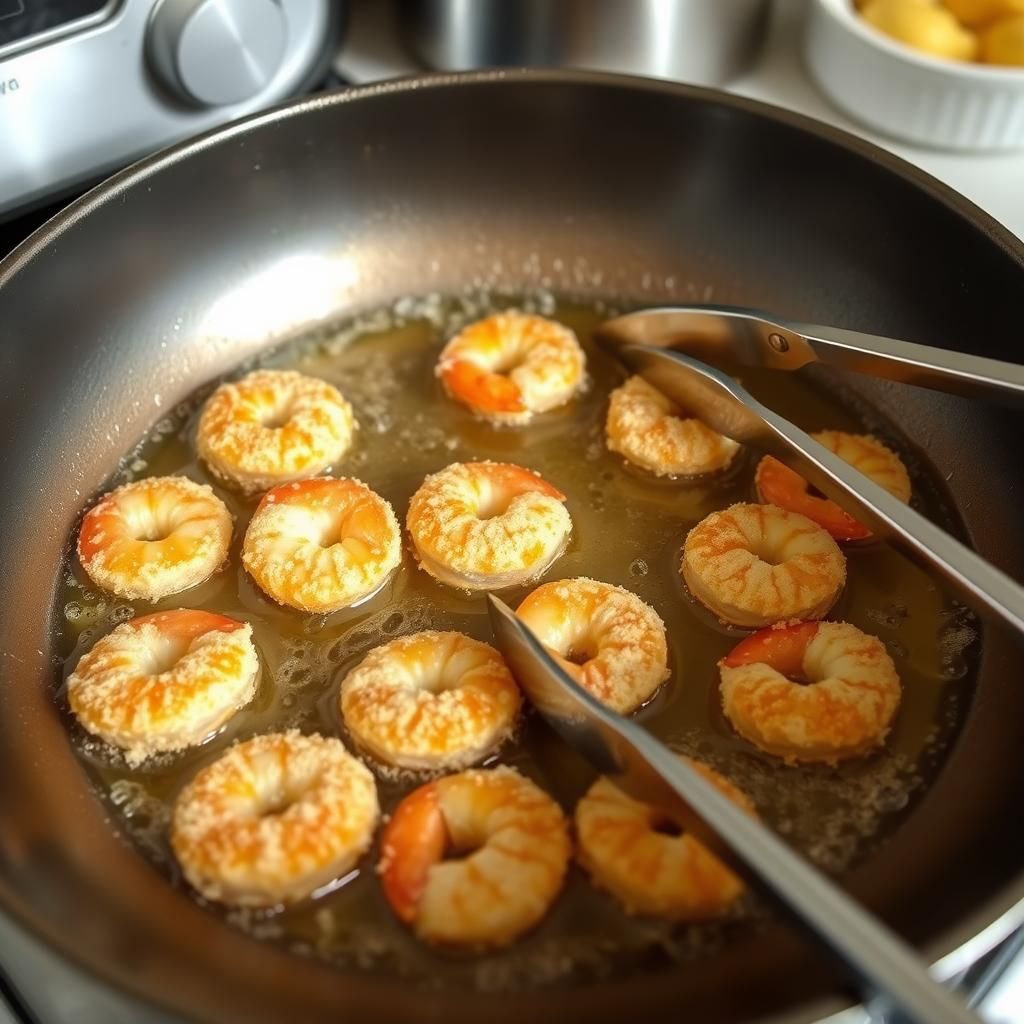
- Heat coconut oil (or avocado oil) in a large skillet over medium heat. You’ll need enough oil to cover the bottom of the skillet.
- Once the oil is hot, carefully place the breaded shrimp in the skillet, being careful not to overcrowd it. Overcrowding will lower the oil temperature and result in soggy shrimp. Work in batches if necessary.
- Cook for 2-3 minutes per side, or until golden brown and cooked through. The internal temperature of the shrimp should reach 145°F (63°C).
- Remove the shrimp from the skillet and place them on a wire rack lined with paper towels to drain any excess oil.
Step 5: Serve and Enjoy!
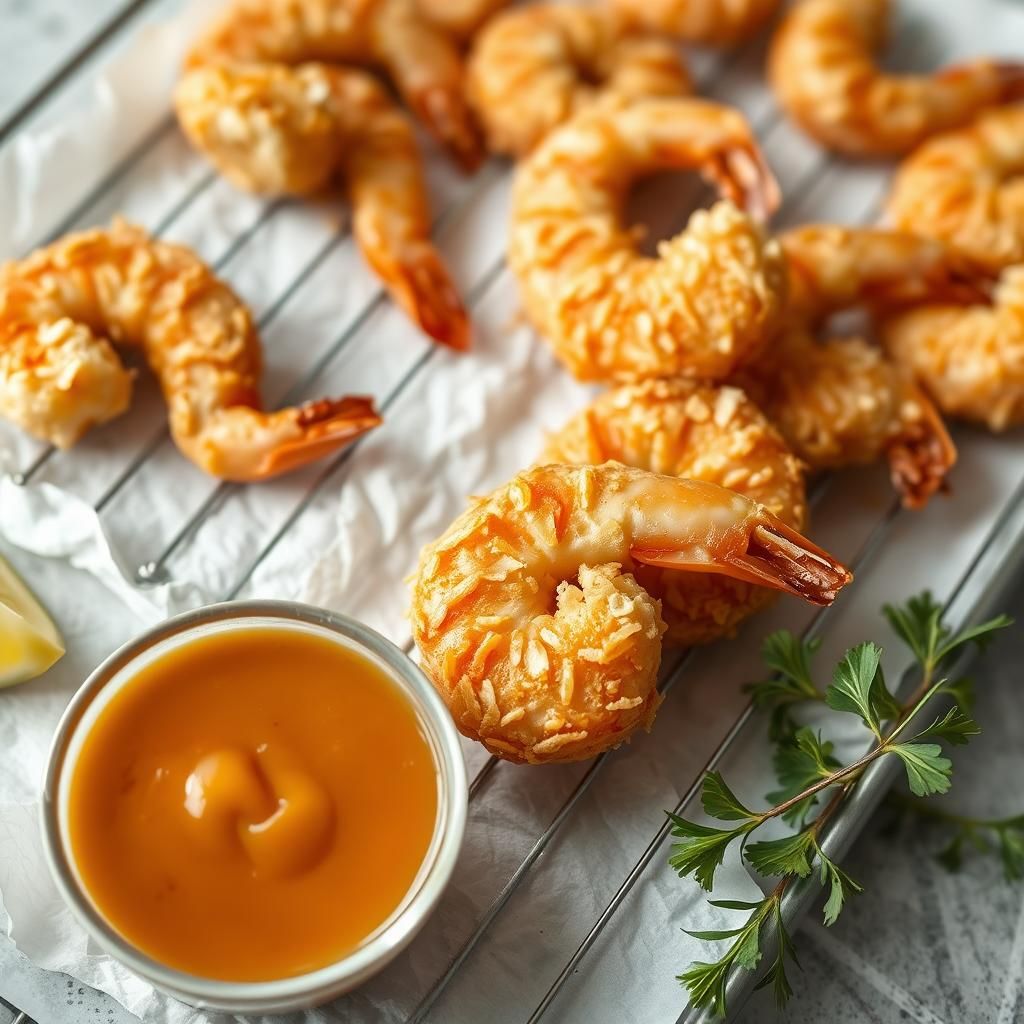
Serve your crispy keto coconut shrimp immediately with your favorite keto-friendly dipping sauce (see suggestions below).
Air Fryer Keto Coconut Shrimp: A Healthier Option
Air frying offers a lower-fat alternative while still achieving a fantastic crispy texture.
Step 1: Prepare the Shrimp (Same as Pan-Fried Method)
Follow the same instructions as above for preparing and seasoning the shrimp.
Step 2: Prepare the Breading Stations (Same as Pan-Fried Method)
Set up the three breading stations as described above.
Step 3: Breading the Shrimp (Same as Pan-Fried Method)
Follow the same instructions as above for breading the shrimp.
Step 4: Air Frying the Shrimp

- Preheat your air fryer to 400°F (200°C).
- Lightly spray the air fryer basket with coconut oil or avocado oil. This will prevent the shrimp from sticking.
- Place the breaded shrimp in the air fryer basket in a single layer, being careful not to overcrowd them. Work in batches if necessary.
- Spray the shrimp lightly with coconut oil or avocado oil. This will help them brown evenly.
- Air fry for 8-10 minutes, flipping halfway through, or until golden brown and cooked through. The internal temperature of the shrimp should reach 145°F (63°C).
Step 5: Serve and Enjoy!
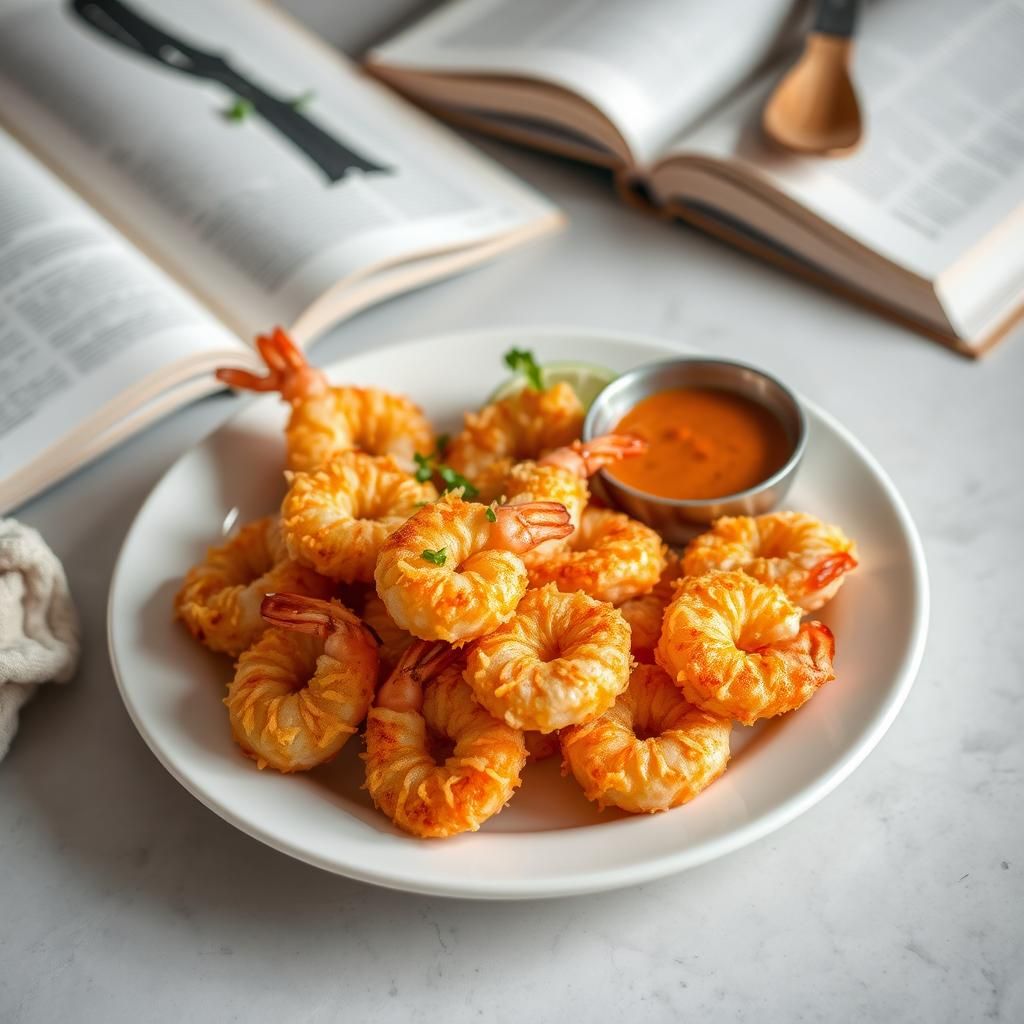
Serve your crispy keto coconut shrimp immediately with your favorite keto-friendly dipping sauce.
Tips for Perfect Keto Coconut Shrimp
- Dry Shrimp is Key: As mentioned before, patting the shrimp dry is essential. Use paper towels and be thorough.
- Don’t Overcrowd: Whether pan-frying or air frying, avoid overcrowding the pan or basket. This ensures even cooking and maximum crispness.
- Oil Temperature Matters: For pan-frying, ensure the oil is hot enough before adding the shrimp. If it’s not hot enough, the shrimp will absorb the oil and become greasy.
- Monitor Cooking Time: Shrimp cooks quickly. Overcooking will result in tough, rubbery shrimp.
- Use Fresh Ingredients: Fresh shrimp and good-quality coconut flakes will make a noticeable difference in the final product.
- Season Generously: Don’t be afraid to season the shrimp and the coating generously with salt, pepper, and other spices.
- Wire Rack is Your Friend: Place the cooked shrimp on a wire rack to drain excess oil. This will help them stay crispy.
- Fine Almond Flour: Using a fine almond flour will result in a smoother coating.
Keto-Friendly Dipping Sauce Ideas
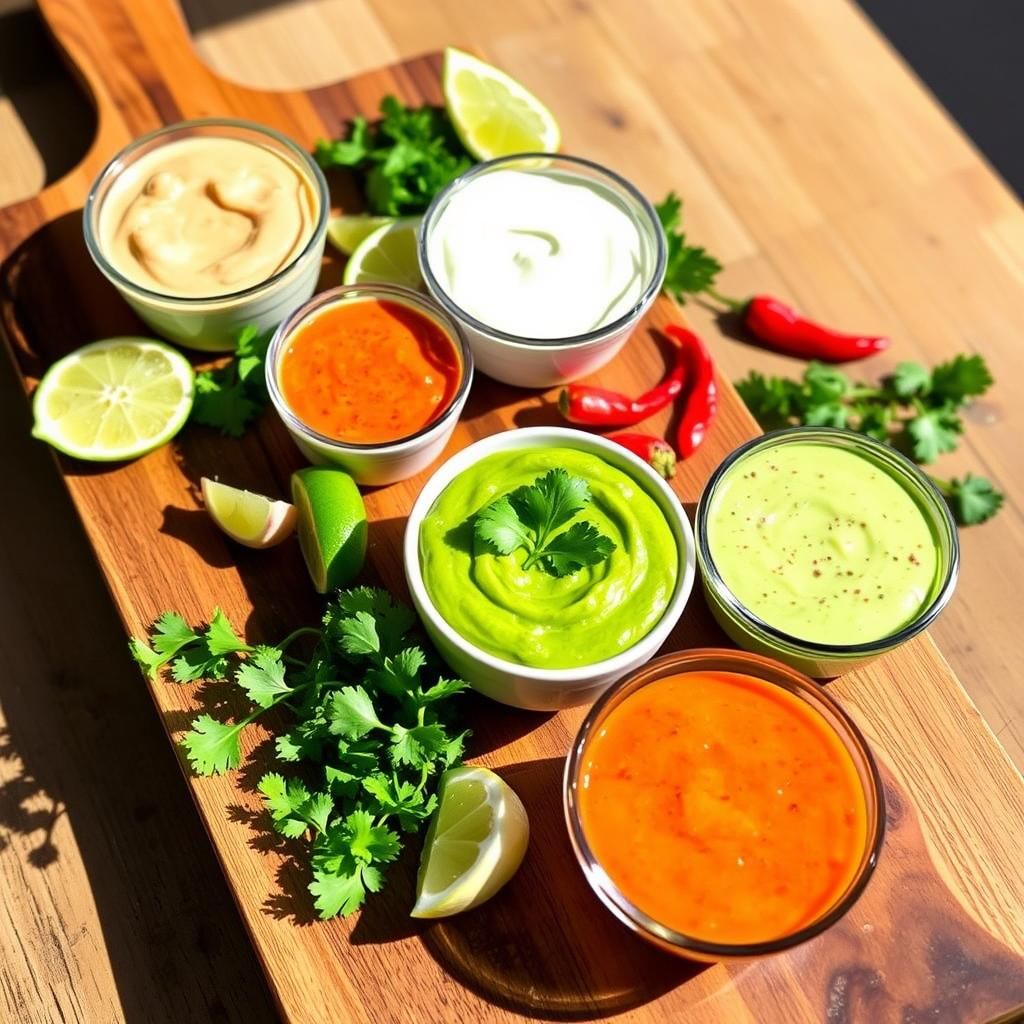
The right dipping sauce can elevate your keto coconut shrimp to the next level. Here are some delicious and keto-friendly options:
- Spicy Mayo: Combine mayonnaise with sriracha sauce (or other hot sauce) to taste. Add a squeeze of lime juice for extra flavor.
- Sweet Chili Sauce (Keto-Friendly): Look for a sugar-free or keto-friendly version of sweet chili sauce, or make your own using a keto-friendly sweetener.
- Avocado Crema: Blend avocado, sour cream (or Greek yogurt), lime juice, cilantro, and a pinch of salt.
- Lemon Garlic Aioli: Combine mayonnaise, minced garlic, lemon juice, and a pinch of salt.
- Coconut Curry Sauce: Use canned coconut milk as a base and add curry powder, ginger, garlic, and a touch of sweetener. Simmer until thickened.
- Sugar-Free Cocktail Sauce: Look for sugar-free options at the grocery store.
- Simple Lime Mayo: Mix mayonnaise with lime juice and zest.
- Peanut Satay Sauce (Keto-Friendly): Using peanut butter, soy sauce (or coconut aminos), ginger, garlic, lime juice, and a keto-friendly sweetener.
Variations and Adaptations
- Spice it Up: Add a pinch of cayenne pepper or red pepper flakes to the coconut mixture for a spicy kick.
- Add Herbs: Mix dried herbs like thyme, oregano, or basil into the almond flour for added flavor.
- Use Different Nuts: Substitute almond flour with other nut flours like macadamia nut flour or pecan flour.
- Add Cheese: Mix grated Parmesan cheese into the coconut mixture for a cheesy twist.
- Use Different Sweeteners: Experiment with different keto-friendly sweeteners like monk fruit sweetener or stevia.
- Coconut Flour Dredge: Before the almond flour, lightly dredge the shrimp in coconut flour to help absorb excess moisture.
- Different Coconut Texture: Use a combination of shredded and desiccated coconut for varied textures.
Nutritional Information (Per Serving – Approximate)
The nutritional information will vary depending on the specific ingredients and serving size. However, here’s a general estimate:
- Calories: 300-400
- Fat: 20-30g
- Protein: 20-30g
- Net Carbs: 3-5g
Disclaimer: Always calculate the nutritional information based on the specific ingredients you use and your serving size. Consult with a healthcare professional or registered dietitian for personalized dietary advice.
Benefits of Keto Coconut Shrimp
- Low in Carbs: Perfect for those following a ketogenic or low-carb diet.
- High in Protein: Provides a good source of protein, which is essential for muscle building and satiety.
- Gluten-Free: Suitable for those with gluten sensitivities or celiac disease (provided you use gluten-free almond flour).
- Delicious and Satisfying: Offers a satisfying crunch and delicious flavor that rivals traditional coconut shrimp.
- Easy to Make: Quick and easy to prepare, making it a great weeknight meal option.
- Versatile: Can be served as an appetizer, snack, or main course.
- Healthier Alternative: Healthier than traditional coconut shrimp due to the use of low-carb ingredients and the option of air frying.
- Customizable: Easily adaptable to your personal preferences and dietary needs.
Serving Suggestions
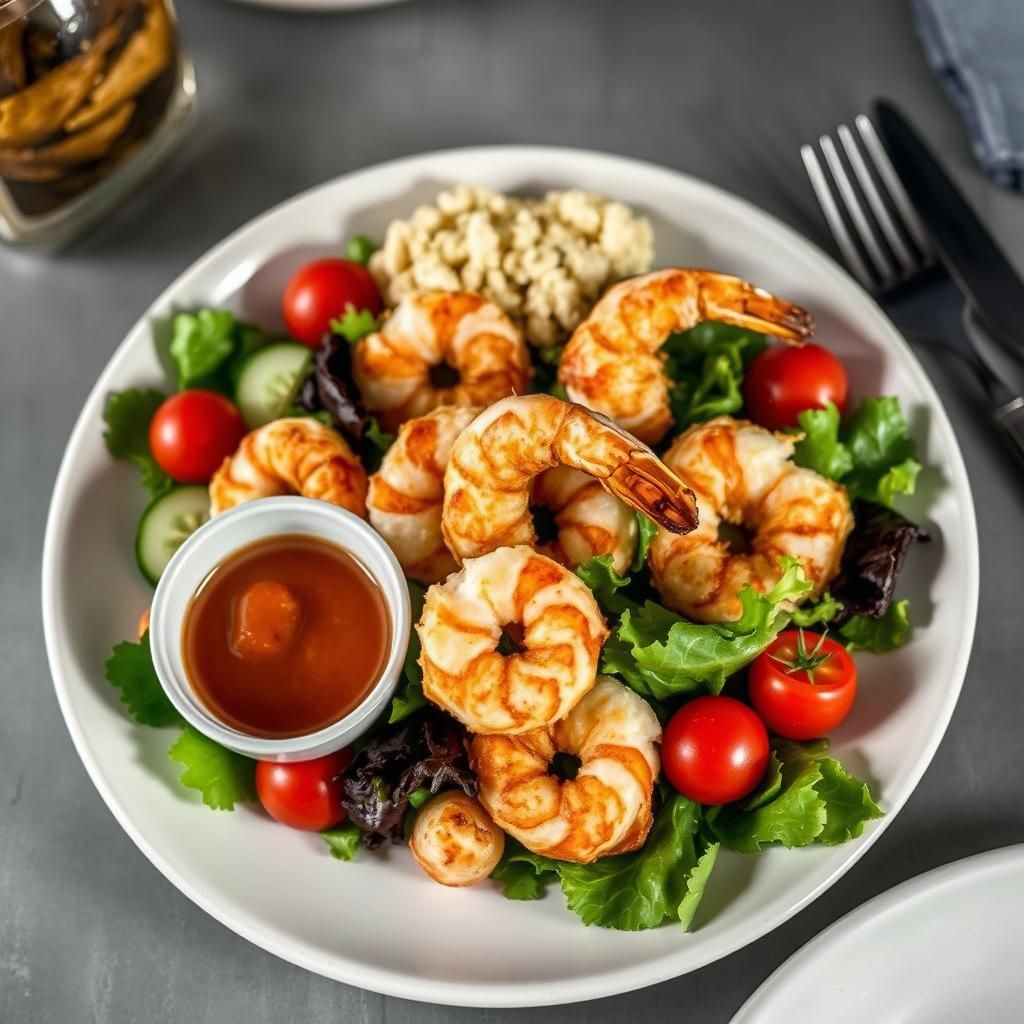
Keto coconut shrimp can be enjoyed in various ways:
- Appetizer: Serve as a crowd-pleasing appetizer at parties or gatherings.
- Main Course: Pair with a side salad, roasted vegetables, or cauliflower rice for a complete meal.
- Tacos or Bowls: Use the coconut shrimp as a filling for keto-friendly tacos or bowls.
- Salad Topper: Add crispy coconut shrimp to your favorite salad for extra flavor and protein.
- Snack: Enjoy as a satisfying and healthy snack between meals.
- Party Platter: Include the coconut shrimp in a party platter with other keto-friendly appetizers.
Common Mistakes to Avoid
- Using Sugared Coconut: Always use unsweetened shredded coconut to keep the recipe keto-friendly.
- Overcooking the Shrimp: Overcooked shrimp will be tough and rubbery. Monitor the cooking time carefully.
- Not Patting the Shrimp Dry: Excess moisture will prevent the coating from sticking and result in soggy shrimp.
- Overcrowding the Pan or Air Fryer: Overcrowding will lower the temperature and prevent the shrimp from cooking evenly and becoming crispy.
- Using Cold Eggs: Allow the eggs to come to room temperature for better adhesion.
- Skipping the Breading Stations: Each station serves a purpose, so don’t skip any steps in the breading process.
- Not Seasoning the Coating: Season the almond flour and coconut mixture generously with salt, pepper, and other spices.
- Using Old Oil: Use fresh oil for the best flavor and results.
Storing and Reheating Keto Coconut Shrimp
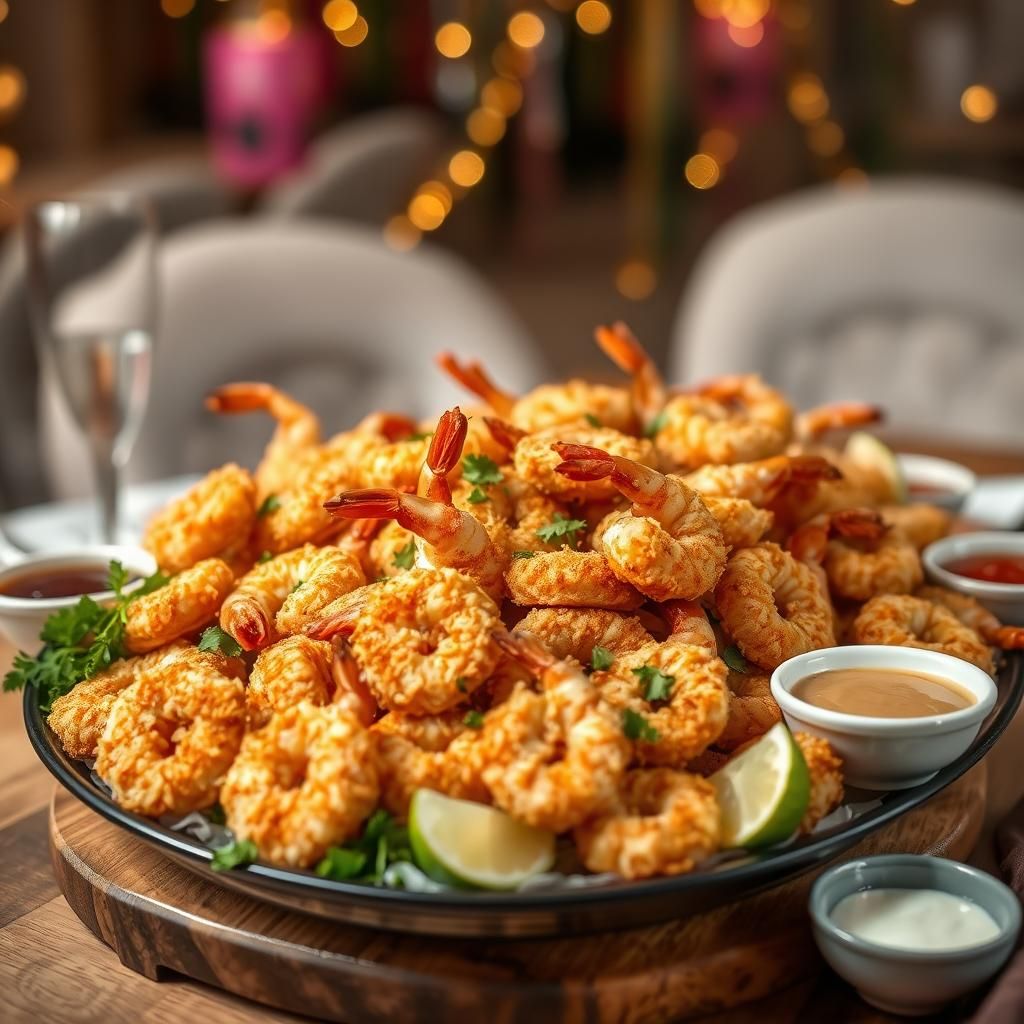
- Storing: Store leftover keto coconut shrimp in an airtight container in the refrigerator for up to 3 days.
- Reheating: For the best results, reheat the shrimp in an air fryer or oven to maintain their crispness. You can also microwave them, but they may not be as crispy.
- Air Fryer: Reheat at 350°F (175°C) for 3-5 minutes, or until heated through.
- Oven: Reheat at 350°F (175°C) for 5-7 minutes, or until heated through.
- Microwave: Microwave on high for 30-60 seconds, or until heated through. Be aware that microwaving can make the shrimp less crispy.
This keto coconut shrimp recipe offers a delicious and guilt-free way to enjoy a classic favorite. By using low-carb ingredients and following the tips and tricks outlined in this article, you can create crispy, flavorful coconut shrimp that fits perfectly into your keto lifestyle. Whether you prefer pan-frying or air frying, this recipe is easy to adapt and customize to your personal preferences. So, go ahead and indulge in this satisfying and healthy dish – your taste buds (and your waistline) will thank you! Enjoy!
Explore More Keto Delights!
Ready to dive deeper into the world of Keto?
Affiliate Link Disclosure: Some of the links in this post are affiliate links. This means that if you click on the link and make a purchase, I may receive a small commission at no extra cost to you. I only recommend products or services that I personally use and believe will be valuable to my readers.
